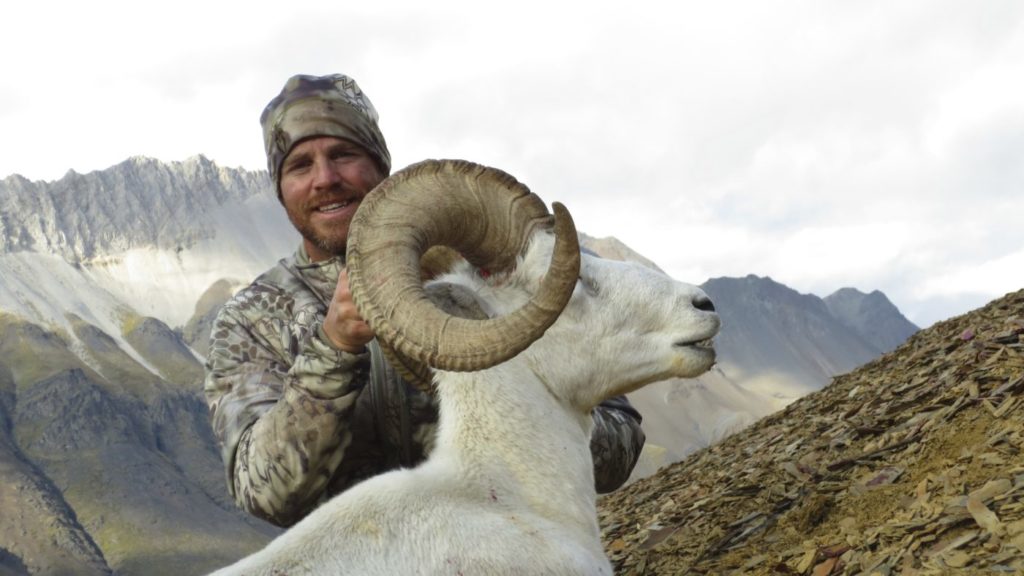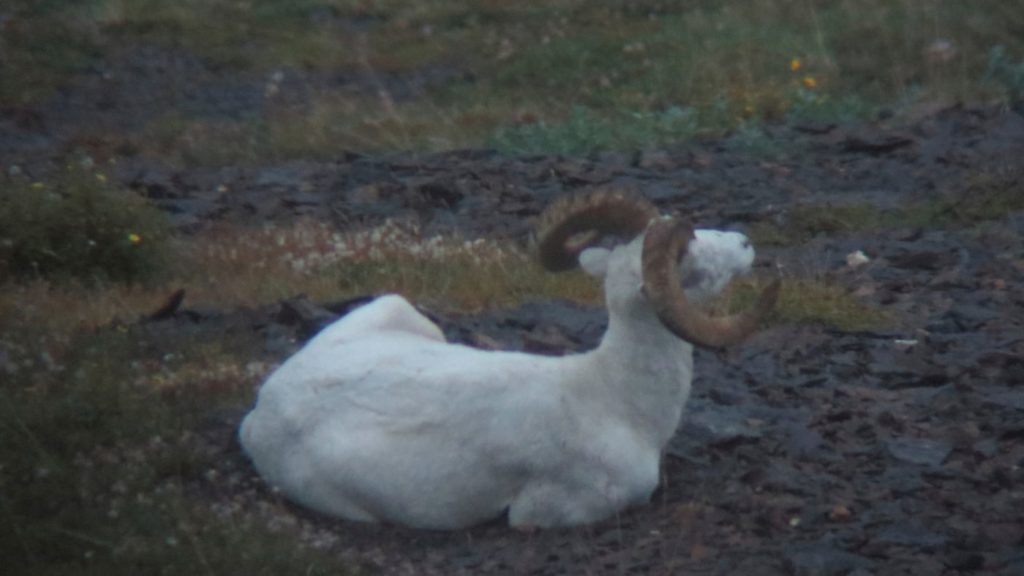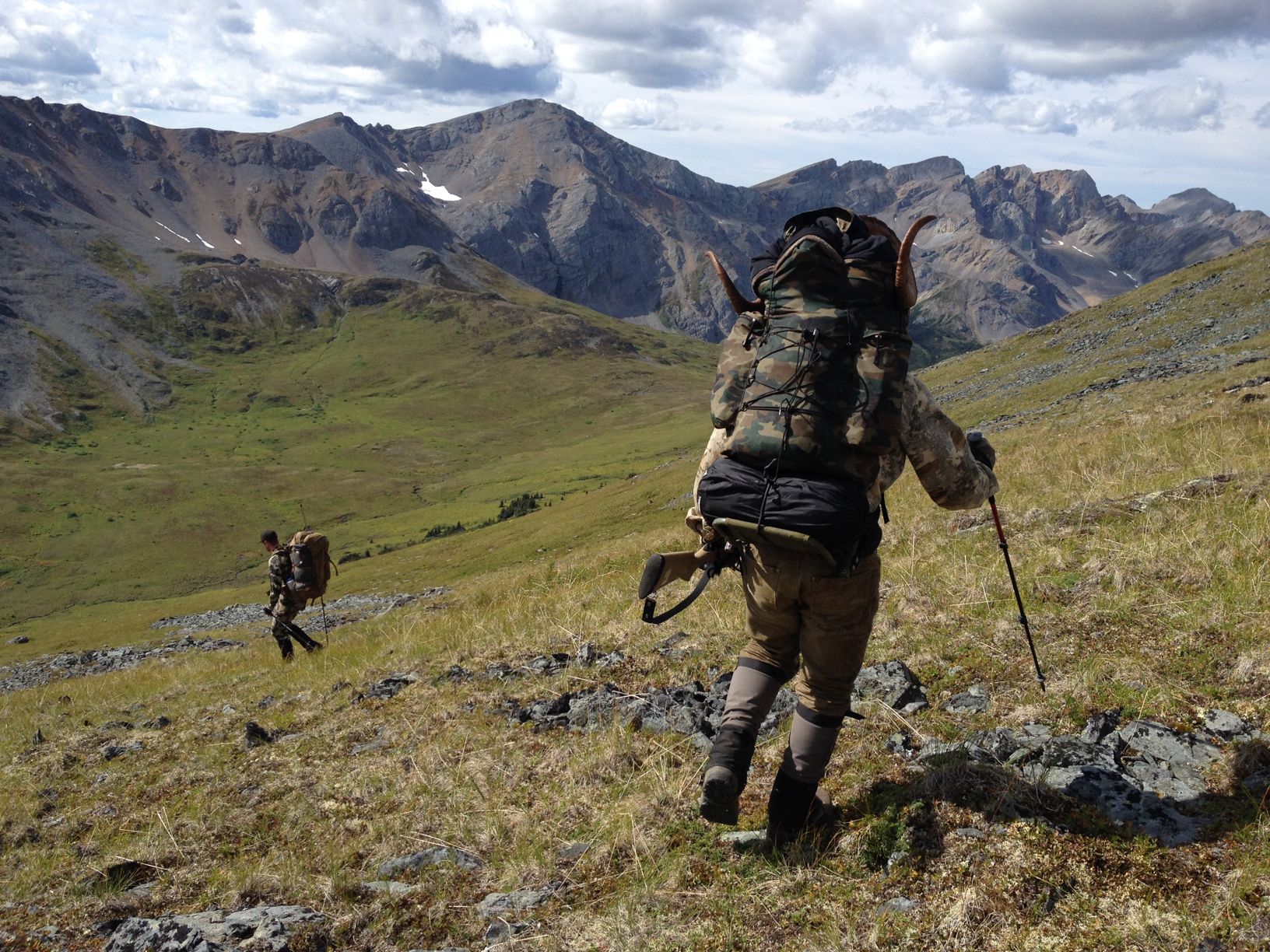Whether you’ve sheep hunted before or it’s a brand new venture, you’ll already know that it’s no easy endeavour. A huge amount of work goes into your quest well before you’ve loaded your backpack. You’ve researched a hundred options of where to go, narrowed them down to a couple of key places, and then finally decided on your location. An extensive amount of time has gone into training and keeping in shape, because physical fitness is crucial to the outcome of your hunt. You’ve checked and rechecked your gun or bow to make sure it’s shooting straight and now, all that’s left to do is to get out there and find the ram of your dreams. In light of that, almost nothing gets a sheep hunter more excited than looking at rams through the spotter.
Having reliable, quality optics can make the difference between finding rams and overlooking them. When it comes to judging sheep, have the best optics you can afford. You spend countless hours behind your glass every year and cannot put a price on good glass. Quality optics are literally priceless on a sheep hunt and will allow you to better judge length and mass, and play a huge role in being able to age a ram effectively from a distance. Find optics that fit your eyes, some brands are better suited to some eyes so you have to test them before you buy. Make sure they don’t make your eyes tired or fuzzy while looking through them. You don’t want to strain your eyes while behind your glass. In my opinion, Swarovski, Leica, Ziess and Nightforce are some of the highest quality optics brands to have in your pack.
Many times, the difference between an average ram and a giant can be difficult to estimate. When it comes to field-judging rams, if you get a satisfactory final result for you who can say that you’re doing it wrong? However, I’ve found the following tips helpful for learning to streamline the judging and ageing process.

Judging Length
If you’re not a seasoned sheep hunter, it will take a while to be able to look at a ram through your spotting scope and be able to accurately judge its horn length. When you’re relatively new to sheep hunting, a great place to start is looking at photos of sheep. Look in magazines such as “Wild Sheep” or “FNAWS” or “Grand Slam Ovis” as there’s often a description underneath the picture that includes length and score. This is a great way to practice judging length as well as ageing sheep.
Rams’ horns can differ greatly in shape and appearance from one ram to another and still end up being the same length and score. One ram’s horns could come high off his head, sweeping far back and down low, making him barely more than ¾ curl, while the ram beside him could have horns that have a tight shallow curl, come above the bridge of the nose and flare out. Both these rams could have the exact same length and score because average rams’ horns are just that – average – and for Dall or Stone sheep, that is usually about 35 inches.
What I like to do is establish a baseline. Then when you know what an average ram looks like, you can start to pick it apart from there. You can say things to yourself like, “OK, the ram I’m looking at comes a little farther back than normal, so maybe I’ll add an inch. They’re not as low as an average ram but his horns come farther forward and tip-up way above his nose and flare way out. So I can add an inch for the horns coming farther forward, and I can add 2-3 inches for his horns coming farther forward and flaring up and out.” Working through this process step by step will get you a rough estimate.
A 40-inch ram is that magical number that we all hope for when we are hunting sheep. If that’s the class of ram you’re looking for, you may see his horns come high off his head, come far back and down below the jaw line, and come halfway between his eye and the end of his nose when viewed from the side, with his horn tip looking like it connects with the base, for a total full curl. That’s one example. But remember there’s more than one combination of shape and appearance that can end up being a 40-incher.
Weight/Mass
Nothing is more disappointing than when, after finding rams, having spent a lot of time getting to them and getting on them, you realize none of them are the mature ram you’re looking for. When looking at rams from a long distance, you often can’t tell what you’re really seeing. If you see weight in his horns in the third quarter down by his jaw, chances are it’s going to be a ram with some age. Younger rams’ horns are thinner. They don’t carry the mass the older rams do. When you’ve gotten close and you’re field judging a ram at, let’s say, 200 yards, and you know that 12-12 ½ inches on the bases of a ram’s horn is about average, then you can start to pick apart his horn weight to see how well he carries it. Older rams with good genetics will carry their horn mass well from the base right through the first and second quarter measurements, gradually getting smaller toward the tip. In these mature rams, you will see that he carries the weight in his horns down into the lower third, down by his jaw.
Age
Ageing sheep in the field is very important. Usually when hunting it’s the younger rams that get the older rams spotted. When you find young rams when glassing, it’s possible older rams are nearby. Younger rams tend to be more active, getting up more often to stretch. A mature ram can remain in his bed for 12 hours a day, chewing his cud.
When I’m looking at sheep at 200 yards through my spotter, the first thing I do is start counting age rings. Some may disagree and say the first thing you should do is look to see if he’s legal by length. The reason I count age first is that sometimes it may be hard to tell if he’s legal or not by length or curl right away, and getting the right angle to tell may take some time. By looking at age first you are sure to select the oldest, most mature ram that has the lowest chance of making it through the next winter.
Also, by being good at ageing sheep you increase your chances of harvesting a ram. In most areas of BC and the Yukon, the regulations allow you to harvest a thin-horned sheep based on age alone. There are rams that will never be legal by length, but will be legal by age that are still good — or even incredible — rams. Their horns may come high off the head, curl far back and down below the jaw line and never make the legal line, yet it could be well over nine years old, and without knowing and being comfortable shooting on age, you could let the ram of a lifetime walk away. If you’re going to pull the trigger based on a ram’s age, it is extremely important to know beyond a shadow of a doubt that you have correctly aged him and that the hunting regulations for that area do in fact allow the harvesting of a ram based on his age. Thinking a ram is older than he actually is while field judging him could be a very costly mistake.
If you’re looking at sheep within shooting range, you should be able to see the difference between a ram that’s 7 ½ -8 ½ years old and one which is 10 ½ -11 ½ years old. Sometimes age rings can hide under the hairline on the bases, especially if you’re hunting late season. So how do you know if that’s the case? Look at the space between his annuli (growth rings). These rings are formed in winter when the ram’s horns are virtually not growing at all — when all the energy from the food a ram consumes goes into keeping him alive instead of into his horn growth.
The distance between a ram’s growth rings is going to get progressively smaller and smaller from one year to the next as they get closer to the horn base. If, for example, a ram’s sixth year growth over the spring, summer, and fall is five inches, and his seventh year is four inches, it’s highly unlikely to have the eighth year of growth hiding underneath the hairline. But if you can see the eighth year of growth over the spring, summer, and fall to be two 2 inches and the ninth year to be one inch, there is a chance that the tenth year of growth could be hiding at the hairline or just underneath.
When I’m guiding and we are lying on a mountain looking at sheep, the most important factor to me is age. To me, the oldest, ‘gnarliest’ rams are the ones that are the higher-quality trophies. Regardless of how big they are, the oldest rams are the ones that are the biggest trophies because they are the ones who are the smartest, have the most experience, and are harder to hunt than younger rams. Seeing the age rings stack up at the bases, knowing that the ram you’re looking at has been around the mountain for close to or even more than a decade, is what makes the most desirable trophy in my books.
Final Thoughts
“Rack bracketing” can go hand-in-hand with establishing a baseline. When you know what an average ram looks like for length, and what average mass looks like, from there you can start to put the two of them together. I like putting sheep into categories. Is he a 140 class ram? 150? 160? 170? By doing this you can then start to pick the details apart and start asking yourself questions such as, ”How heavy are his bases?” and, “Does he carry his weight well in the second and third quarter?” From here you can go into fine-tuning your judgment calls and do your best to come up with an accurate final number.
Know what makes a sheep score. If a ram has 39 inches of length, 13-inch bases, 12-inch first quarters, 10-inch second quarters, 6.5-inch third quarters, and is symmetrical on both sides, you’re looking at a 160-class ram. This addition process is the same for all rams, and you can apply it to any sheep if you can make an accurate estimate for length and mass.
Making those calls and being able to judge rams accurately comes from a lot of experience in the field. That doesn’t happen overnight, and no matter how much sheep hunting you’ve done, there’s always room to learn more. There isn’t any right or wrong way to start; the important thing is that you try. The best mountain hunters I know are the ones with the most experience and the ones who take the most time observing and studying their animals. The more sheep you look at and actually get to put a tape on, the better you become at judging them.
When it comes to hunting mature sheep, if you want the ram of your lifetime, it’s important to determine which hunting areas have good genetics. It sounds simple but you won’t kill big rams unless you hunt where big rams live. Some people forget this fact. Usually, areas that grow big rams are areas that have a lower sheep population density than others. Lower numbers of sheep per square mile provides higher quality food sources and a better winter range, which results in less competition for the high-nutrition food that rams need in order to make it through the winter.
Areas that have higher sheep density usually grow smaller rams. More sheep equals more competition for food and more competition for the ewes in the rut. The harder the rams have to compete in the rut will play a big part in how well they make it through the winter. If rams have to run harder to compete with other rams over the ewes, they burn a higher proportion of the fat they stored up throughout the summer to help them make it through the hard winter months. You want to hunt big sheep? Consider hunting areas that may not have as many rams as other areas.
Many people have a negative perception of trophy hunting. They think trophy hunters are only after the horns of the animal, that they don’t want the meat, and that the meat gets wasted. That is a misconception. To me, trophy hunting means you do not shoot everything that walks. It means you’re selective regarding which animals you harvest, picking the oldest and most mature ones. Yes, the horns are part of the success. Almost every hunter loves a good set of horns! But along with that is the supply of fantastic meat that comes with harvesting the animal. It doesn’t get more organic than that!
I believe a true trophy hunter is someone who knows that the trophy isn’t only the animal. That it’s the hunt, the pursuit, the whole experience. It’s the hard times mixed with the struggles and the joy of overcoming whatever obstacles the wilderness throws at you. The trophy is the adventure and the people you share it with. If you don’t enjoy it, you’re wasting your time because we don’t harvest an animal every single time we go out — even if we could. If harvesting an animal is the only thing that makes the trip successful, you’re sure to end up disappointed and are, in my opinion, missing the bigger picture. Working hard for it is what makes a hunt both enjoyable and successful, even when you decide not to pull the trigger.
In my opinion, sheep aren’t an animal that a hunter needs to shoot every season. Having the opportunity to harvest a handful of rams over your lifetime is a remarkable achievement, even if you’re someone who can harvest a ram every single year. Having the physical ability to head into the mountains, going hunting every year, seeing legal rams, and turning them down makes you a more accomplished and respectable hunter. Letting them walk when they’re not the class of animal you’re looking for and still being glad you did so, even if that means you go home empty-handed, is what creates a reputation worthy of true respect. You hunt because you love to, because it’s a part of who you are. As a mountain hunter myself, nothing beats the feeling of walking up and putting your hands on a very hard earned, mature ram. There’s just no comparison. Now go hunt hard!
About The Author:
Spending the bulk of his time guiding in the Yukon Territory, Jared specializes in horseback hunting Dall and Stone sheep, mountain caribou, Alaska-Yukon moose, and grizzly bears. His spring guiding season finds him in Southern BC, hunting the giant black bears of Vancouver Island and the late fall season finds him guiding for the big mule deer of Southern Alberta. Jared is a BC resident and a truly dedicated, professional hunting guide.





